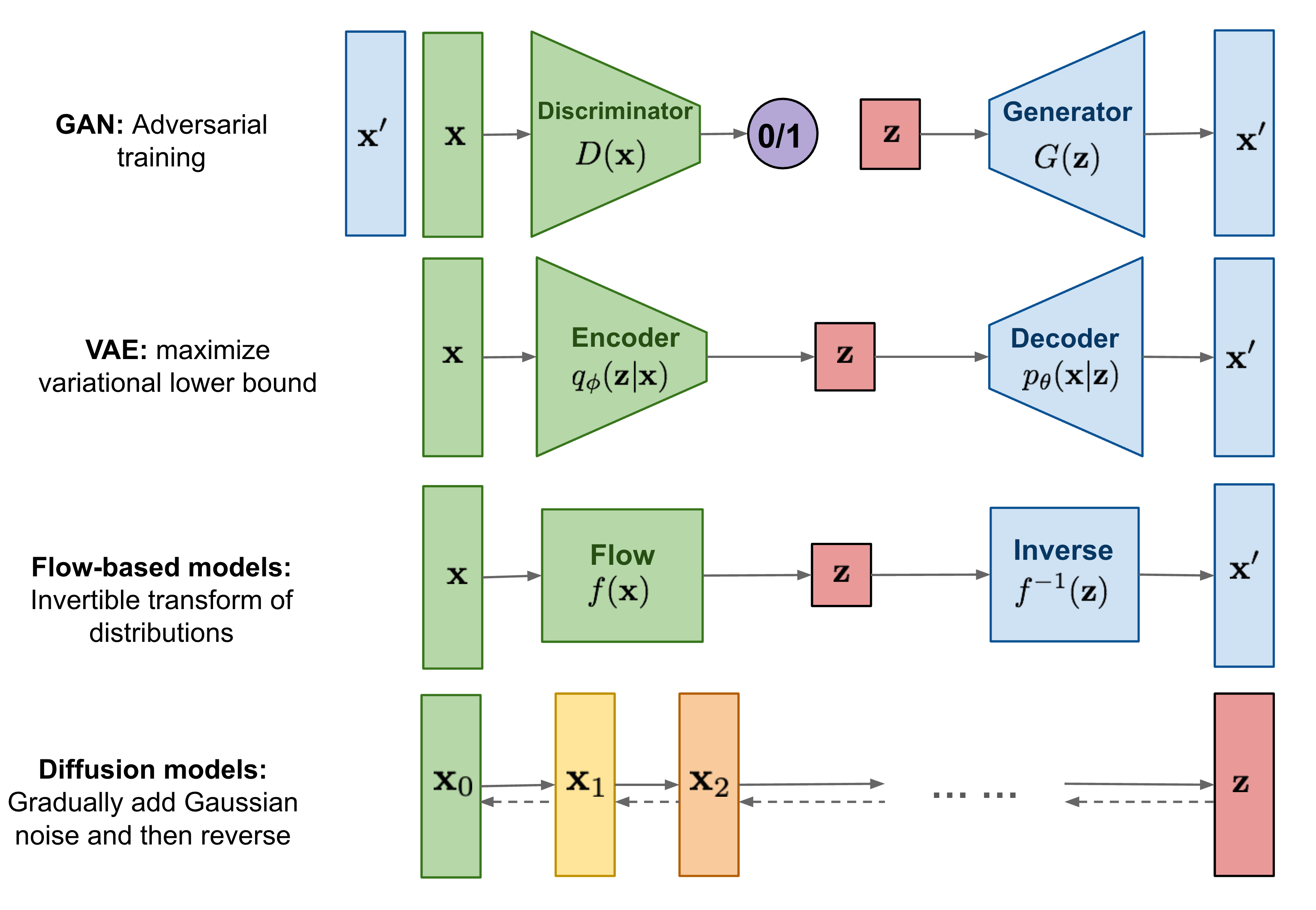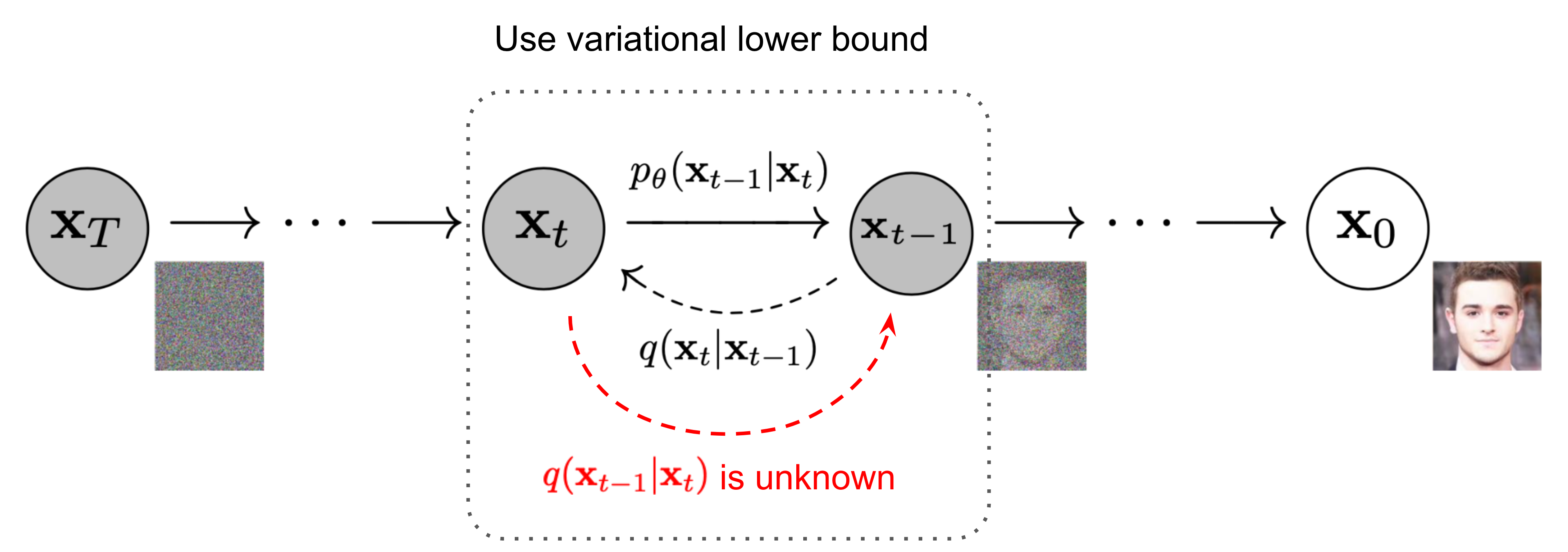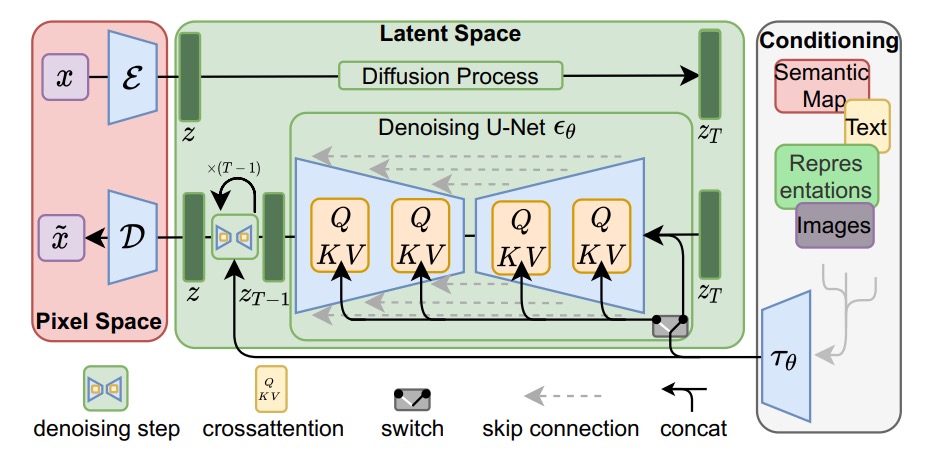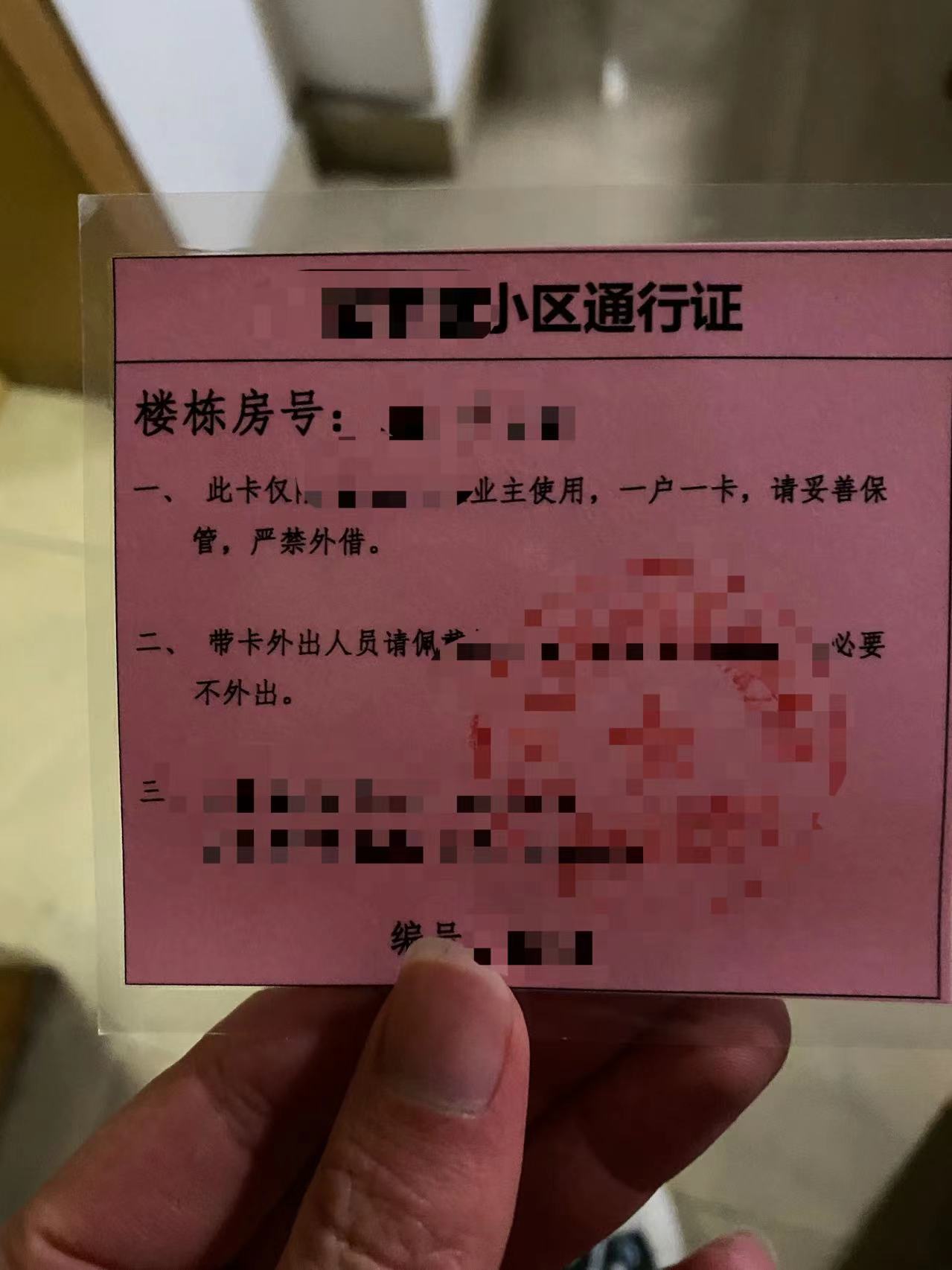一般认为,扩散模型这一概念最早是在ICML2015的Deep Unsupervised Learning using Nonequilibrium Thermodynamics一文中提出,但真正是扩散模型应用普及的是Denoising Diffusion Probabilistic Models 一文中提出的DDPM
1. 输入输出
训练输入: \[ X= \{x_1, x_2, ..., x_N\} \\ Z=\{z_1,z_2,...,z_{N}\} \] 其中,
- \(x_i \in \mathbb{R}^{m},i =1,2,...,N\),\(x_i\) 为特征域
- \(z_i \in \mathbb{R}^k,,i =1,2,...,N\),\(z_i\) 为噪声域
测试输入 \[ Z'=\{z'_1,z'_2,...,z'_{N'}\},z'_i \in \mathbb{R}^k \] 测试输出: \[ \hat X'=\{\hat x'_1, \hat x'_2,..., \hat x'_{N'}\},\hat x'_i \in \mathbb{R}^m \]
2. 基本定义
相关论文:
- Deep Unsupervised Learning using Nonequilibrium Thermodynamics
- Denoising Diffusion Probabilistic Models
代码实现:
2.1. 模型推导
这是一张目前各类生成模型框架的对比图
Diffusion Model的思想很简单:对数据域 \(\mathbf x\) 不断添加高斯噪声,且保持每一时刻的分布仍为高斯分布,最终变换至噪声域 \(\mathbf z\) ;然后再将噪声域 \(\mathbf z\) 再逐步还原回数据域 \(\mathbf x\)
2.2. 学习策略
首先来推导添加噪声的过程
首先推导 \(\mathbf x_t\) 关于 \(\mathbf x_{t-1}\) 的表达形式(其实这一步不需要怎么推导,因为大部分的结论都是直接假设出来的)
不妨设
- \(\mathbf x_0 \sim q(\mathbf x_0),\mathbf x_t = q(\mathbf{x}_t \vert \mathbf{x}_{t-1})\)
- 每一个时刻 \(t-1\) 往前叠加高斯噪声 \(\mathcal{N}(\mathbf{x}_t; \sqrt{1 - \beta_t} \mathbf{x}_{t-1}, \beta_t\mathbf{I})\),其中,\(\beta_t \in (0, 1)\) 是关于噪声集的超参数,一般是一个随 \(t\) 单调递增的线性函数。
- \(\mathbf x_t\) 只与 \(\mathbf x_{t-1}\) 有关
则有 \[ q(\mathbf{x}_t \vert \mathbf{x}_{t-1}) = \mathcal{N}(\mathbf{x}_t; \sqrt{1 - \beta_t} \mathbf{x}_{t-1}, \beta_t\mathbf{I}) \\ q(\mathbf{x}_{1:T} \vert \mathbf{x}_0) = \prod^T_{t=1} q(\mathbf{x}_t \vert \mathbf{x}_{t-1}) \] 然后再推导 \(\mathbf x_t\) 关于 \(\mathbf x_0\) 的表达形式(这一步推导的目的是方便后续的反向推导)
不妨再设
- \(\alpha_t = 1 - \beta_t, \bar{\alpha}_t = \prod_{i=1}^t \alpha_i\)
- \(\boldsymbol{\epsilon}_t \sim \mathcal{N}(\mathbf{0}, \mathbf{I}), \bar{\boldsymbol{\epsilon}}_t \sim \mathcal{N}(\mathbf{0}, \mathbf{I})\),其中,\(\{ \boldsymbol{\epsilon}_t \}\) 集合内均为相互独立的分布, \(\bar{\boldsymbol{\epsilon}}_i\) 是 \(\{ \boldsymbol{\epsilon}_{T-i}| i=1,2,\cdots T \}\) 集合内所有的分布的叠加分布
则有 \[ \begin{aligned} \mathbf{x}_t &= \sqrt{\alpha_t}\mathbf{x}_{t-1} + \sqrt{1 - \alpha_t}\boldsymbol{\epsilon}_{t-1} \\ &= \sqrt{\alpha_t} (\sqrt{\alpha_{t-1}}\mathbf{x}_{t-2} + \sqrt{1 - \alpha_{t-1}}\boldsymbol{\epsilon}_{t-2}) + \sqrt{1 - \alpha_t}\boldsymbol{\epsilon}_{t-1} \\ &= \sqrt{\alpha_t \alpha_{t-1}} \mathbf{x}_{t-2} + \sqrt{1 - \alpha_t \alpha_{t-1}} \bar{\boldsymbol{\epsilon}}_{2} \\ &= \dots \\ &= \sqrt{\bar{\alpha}_t}\mathbf{x}_0 + \sqrt{1 - \bar{\alpha}_t}\bar{\boldsymbol{\epsilon}}_t \\ q(\mathbf{x}_t \vert \mathbf{x}_0) &= \mathcal{N}(\mathbf{x}_t; \sqrt{\bar{\alpha}_t} \mathbf{x}_0, (1 - \bar{\alpha}_t)\mathbf{I}) \end{aligned} \]
注:
上面推导中,
第一步应用了重参数技巧,该技巧已经在VAE中提及过,这里就不再赘述了
第三步应用了独立高斯分布可加性 \(\mathcal{N}(\mathbf{0}, \sigma_1^2\mathbf{I}) + \mathcal{N}(\mathbf{0}, \sigma_2^2\mathbf{I}) = \mathcal{N}(\mathbf{0}, (\sigma_1^2 + \sigma_2^2)\mathbf{I})\),即可推导出 \(\sqrt{(1 - \alpha_t)}\boldsymbol{\epsilon}_{t-1} + \sqrt {\alpha_t (1-\alpha_{t-1})} \boldsymbol{\epsilon}_{t-2} = \sqrt{1 - \alpha_t\alpha_{t-1}} \bar{\boldsymbol{\epsilon}}_{2}\)
下面来看消除噪声的过程,这一部分的目的是还原 \(q(\mathbf{x}_{t-1} \vert \mathbf{x}_{t})\) 表达形式
\(q(\mathbf{x}_{t-1} \vert \mathbf{x}_{t})\) 未知且不可求,但可以证明,当 \(q(\mathbf{x}_t \vert \mathbf{x}_{t-1})\) 满足高斯分布,且 \(\beta_t\) 较小时,\(q(\mathbf{x}_{t-1} \vert \mathbf{x}_{t})\) 仍满足高斯分布。所以模型的还原问题可以转化为,每一个时刻向前叠加一个高斯分布,使其还原为原来的分布
注:
这一部分仍然属于前向推导,尽管从上面模型图中看起来的是属于反向推导,但实际上,上面的模型图是做了折叠处理,将模型图展开便可以得到一个类似于编码-解码的对称结构,加噪是编码,降噪是解码
由于加噪过程不存在未知变量,所以实际模型构建的时候只有降噪部分结构,即输入 \(\mathbf x_T = \mathbf z\),输出 \(\mathbf x_0 \sim q(\mathbf x_0)\)
不妨设
- \(\mathbf x_t \sim p_\theta(\mathbf x),\mathbf x_{t-1} = p_\theta(\mathbf{x}_{t-1} \vert \mathbf{x}_t)\)
- 每一个时刻 \(t\) 往后叠加高斯噪声 \(\mathcal{N}(\mathbf{x}_{t-1}; \boldsymbol{\mu}_\theta(\mathbf{x}_t, t), \boldsymbol{\Sigma}_\theta(\mathbf{x}_t, t))\)
则有 \[ p_\theta(\mathbf{x}_{0:T}) = p(\mathbf{x}_T) \prod^T_{t=1} p_\theta(\mathbf{x}_{t-1} \vert \mathbf{x}_t) \\ p_\theta(\mathbf{x}_{t-1} \vert \mathbf{x}_t) = \mathcal{N}(\mathbf{x}_{t-1}; \boldsymbol{\mu}_\theta(\mathbf{x}_t, t), \boldsymbol{\Sigma}_\theta(\mathbf{x}_t, t)) \] 但上式中的参数 \(\boldsymbol{\mu}_\theta(\mathbf{x}_t, t), \boldsymbol{\Sigma}_\theta(\mathbf{x}_t, t)\) 没有办法直接求解,所以使用万能的神经网络进行拟合。
由于 \(q(\mathbf{x}_{t-1} \vert \mathbf{x}_{t})\) 不能直接获得,所以 \(p_\theta(\mathbf{x}_{t-1} \vert \mathbf{x}_t)\) 不能直接拟合 \(q(\mathbf{x}_{t-1} \vert \mathbf{x}_{t})\) ,暂时没什么好的思路。
这里不妨先跳到模型损失函数的推导。
2.3. 学习算法
模型的目的是比较真实样本和生成样本的差距,所以选择优化 \(q(\mathbf x_0)\) 和 \(p_{\theta}(\mathbf x_0)\) 的交叉熵 \[ L=\mathbb{E}_{q\left(x_0\right)}\left[-\log p_\theta\left(x_0\right)\right] \] 但 \(p_\theta\left(x_0\right)\) 目前还是未知的,但可以通过变分下限(VLB)的方法,巧妙地消去 \[ \begin{aligned} - \log p_\theta(\mathbf{x}_0) &\leq - \log p_\theta(\mathbf{x}_0) + D_\text{KL}(q(\mathbf{x}_{1:T}\vert\mathbf{x}_0) \| p_\theta(\mathbf{x}_{1:T}\vert\mathbf{x}_0) ) \\ &= -\log p_\theta(\mathbf{x}_0) + \mathbb{E}_{\mathbf{x}_{1:T}\sim q(\mathbf{x}_{1:T} \vert \mathbf{x}_0)} \Big[ \log\frac{q(\mathbf{x}_{1:T}\vert\mathbf{x}_0)}{p_\theta(\mathbf{x}_{0:T}) / p_\theta(\mathbf{x}_0)} \Big] \\ &= -\log p_\theta(\mathbf{x}_0) + \mathbb{E}_q \Big[ \log\frac{q(\mathbf{x}_{1:T}\vert\mathbf{x}_0)}{p_\theta(\mathbf{x}_{0:T})} + \log p_\theta(\mathbf{x}_0) \Big] \\ &= \mathbb{E}_q \Big[ \log \frac{q(\mathbf{x}_{1:T}\vert\mathbf{x}_0)}{p_\theta(\mathbf{x}_{0:T})} \Big] \end{aligned} \] 代入上式中,应用fubini定理,有 \[ \begin{aligned} L_\text{VLB} &=\mathbb{E}_{q\left(x_0\right)}\left(\mathbb{E}_{q\left(x_{1-T} \mid x_0\right)}\left[\log \frac{q\left(x_{1 ; T} \mid x_0\right)}{p_\theta\left(x_{0: T}\right)}\right]\right) \\ &= \mathbb{E}_{q(\mathbf{x}_{0:T})} \Big[ \log \frac{q(\mathbf{x}_{1:T}\vert\mathbf{x}_0)}{p_\theta(\mathbf{x}_{0:T})} \Big] \\ &\geq - \mathbb{E}_{q(\mathbf{x}_0)} \log p_\theta(\mathbf{x}_0) \end{aligned} \]
注:
上式也可以通过Jensen不等式推导得出 \[ \begin{aligned} L &= - \mathbb{E}_{q(\mathbf{x}_0)} \log p_\theta(\mathbf{x}_0) \\ &= - \mathbb{E}_{q(\mathbf{x}_0)} \log \Big( \int p_\theta(\mathbf{x}_{0:T}) d\mathbf{x}_{1:T} \Big) \\ &= - \mathbb{E}_{q(\mathbf{x}_0)} \log \Big( \int q(\mathbf{x}_{1:T} \vert \mathbf{x}_0) \frac{p_\theta(\mathbf{x}_{0:T})}{q(\mathbf{x}_{1:T} \vert \mathbf{x}_{0})} d\mathbf{x}_{1:T} \Big) \\ &= - \mathbb{E}_{q(\mathbf{x}_0)} \log \Big( \mathbb{E}_{q(\mathbf{x}_{1:T} \vert \mathbf{x}_0)} \frac{p_\theta(\mathbf{x}_{0:T})}{q(\mathbf{x}_{1:T} \vert \mathbf{x}_{0})} \Big) \\ &\leq - \mathbb{E}_{q(\mathbf{x}_{0:T})} \log \frac{p_\theta(\mathbf{x}_{0:T})}{q(\mathbf{x}_{1:T} \vert \mathbf{x}_{0})} \\ &= \mathbb{E}_{q(\mathbf{x}_{0:T})}\Big[\log \frac{q(\mathbf{x}_{1:T} \vert \mathbf{x}_{0})}{p_\theta(\mathbf{x}_{0:T})} \Big] = L_\text{VLB} \end{aligned} \] 上面过程的第五步即应用了Jensen不等式
对 \(L_\text{VLB}\) 进一步展开 \[ \begin{aligned} L_\text{VLB} &= \mathbb{E}_{q(\mathbf{x}_{0:T})} \Big[ \log\frac{q(\mathbf{x}_{1:T}\vert\mathbf{x}_0)}{p_\theta(\mathbf{x}_{0:T})} \Big] \\ &= \mathbb{E}_q \Big[ \log\frac{\prod_{t=1}^T q(\mathbf{x}_t\vert\mathbf{x}_{t-1})}{ p_\theta(\mathbf{x}_T) \prod_{t=1}^T p_\theta(\mathbf{x}_{t-1} \vert\mathbf{x}_t) } \Big] \\ &= \mathbb{E}_q \Big[ -\log p_\theta(\mathbf{x}_T) + \sum_{t=1}^T \log \frac{q(\mathbf{x}_t\vert\mathbf{x}_{t-1})}{p_\theta(\mathbf{x}_{t-1} \vert\mathbf{x}_t)} \Big] \\ &= \mathbb{E}_q \Big[ -\log p_\theta(\mathbf{x}_T) + \sum_{t=2}^T \log \frac{q(\mathbf{x}_t\vert\mathbf{x}_{t-1})}{p_\theta(\mathbf{x}_{t-1} \vert\mathbf{x}_t)} + \log\frac{q(\mathbf{x}_1 \vert \mathbf{x}_0)}{p_\theta(\mathbf{x}_0 \vert \mathbf{x}_1)} \Big] \\ &= \mathbb{E}_q \Big[ -\log p_\theta(\mathbf{x}_T) + \sum_{t=2}^T \log \Big( \frac{q(\mathbf{x}_{t-1} \vert \mathbf{x}_t, \mathbf{x}_0)}{p_\theta(\mathbf{x}_{t-1} \vert\mathbf{x}_t)}\cdot \frac{q(\mathbf{x}_t \vert \mathbf{x}_0)}{q(\mathbf{x}_{t-1}\vert\mathbf{x}_0)} \Big) + \log \frac{q(\mathbf{x}_1 \vert \mathbf{x}_0)}{p_\theta(\mathbf{x}_0 \vert \mathbf{x}_1)} \Big] \\ &= \mathbb{E}_q \Big[ -\log p_\theta(\mathbf{x}_T) + \sum_{t=2}^T \log \frac{q(\mathbf{x}_{t-1} \vert \mathbf{x}_t, \mathbf{x}_0)}{p_\theta(\mathbf{x}_{t-1} \vert\mathbf{x}_t)} + \sum_{t=2}^T \log \frac{q(\mathbf{x}_t \vert \mathbf{x}_0)}{q(\mathbf{x}_{t-1} \vert \mathbf{x}_0)} + \log\frac{q(\mathbf{x}_1 \vert \mathbf{x}_0)}{p_\theta(\mathbf{x}_0 \vert \mathbf{x}_1)} \Big] \\ &= \mathbb{E}_q \Big[ -\log p_\theta(\mathbf{x}_T) + \sum_{t=2}^T \log \frac{q(\mathbf{x}_{t-1} \vert \mathbf{x}_t, \mathbf{x}_0)}{p_\theta(\mathbf{x}_{t-1} \vert\mathbf{x}_t)} + \log\frac{q(\mathbf{x}_T \vert \mathbf{x}_0)}{q(\mathbf{x}_1 \vert \mathbf{x}_0)} + \log \frac{q(\mathbf{x}_1 \vert \mathbf{x}_0)}{p_\theta(\mathbf{x}_0 \vert \mathbf{x}_1)} \Big]\\ &= \mathbb{E}_q \Big[ \log\frac{q(\mathbf{x}_T \vert \mathbf{x}_0)}{p_\theta(\mathbf{x}_T)} + \sum_{t=2}^T \log \frac{q(\mathbf{x}_{t-1} \vert \mathbf{x}_t, \mathbf{x}_0)}{p_\theta(\mathbf{x}_{t-1} \vert\mathbf{x}_t)} - \log p_\theta(\mathbf{x}_0 \vert \mathbf{x}_1) \Big] \\ &= \mathbb{E}_q [\underbrace{D_\text{KL}(q(\mathbf{x}_T \vert \mathbf{x}_0) \parallel p_\theta(\mathbf{x}_T))}_{L_T} + \sum_{t=2}^T \underbrace{D_\text{KL}(q(\mathbf{x}_{t-1} \vert \mathbf{x}_t, \mathbf{x}_0) \parallel p_\theta(\mathbf{x}_{t-1} \vert\mathbf{x}_t))}_{L_{t-1}} \underbrace{- \log p_\theta(\mathbf{x}_0 \vert \mathbf{x}_1)}_{L_0} ] \\ &= L_T + L_{T-1} + \dots + L_0 \end{aligned} \] 其中,由于\(q(\mathbf{x}_T \vert \mathbf{x}_0)\) 没有未知变量,所以 \(L_T\) 可忽略;而 \(L_0\) 用了一种名为separate discrete decoder的处理手段,将 \(L_0\) 处理成一般常量忽略。
所以上式只需关注 \(L_t\) 即可。这里书接上一回,回到之前的前向推导,\(p_\theta(\mathbf{x}_{t-1} \vert \mathbf{x}_t)\) 可以拟合 \(q(\mathbf{x}_t \vert \mathbf{x}_{t-1}, \mathbf{x}_0)\)
问题转化为对 \(q(\mathbf{x}_t \vert \mathbf{x}_{t-1}, \mathbf{x}_0)\) 的推导,根据贝叶斯定理,可得 \[ \begin{aligned} q(\mathbf{x}_{t-1} \vert \mathbf{x}_t, \mathbf{x}_0) &= q(\mathbf{x}_t \vert \mathbf{x}_{t-1}, \mathbf{x}_0) \frac{ q(\mathbf{x}_{t-1} \vert \mathbf{x}_0) }{ q(\mathbf{x}_t \vert \mathbf{x}_0) } \\ &\propto \exp \Big(-\frac{1}{2} \big(\frac{(\mathbf{x}_t - \sqrt{\alpha_t} \mathbf{x}_{t-1})^2}{\beta_t} + \frac{(\mathbf{x}_{t-1} - \sqrt{\bar{\alpha}_{t-1}} \mathbf{x}_0)^2}{1-\bar{\alpha}_{t-1}} - \frac{(\mathbf{x}_t - \sqrt{\bar{\alpha}_t} \mathbf{x}_0)^2}{1-\bar{\alpha}_t} \big) \Big) \\ &= \exp \Big(-\frac{1}{2} \big(\frac{\mathbf{x}_t^2 - 2\sqrt{\alpha_t} \mathbf{x}_t \color{blue}{\mathbf{x}_{t-1}} \color{black}{+ \alpha_t} \color{red}{\mathbf{x}_{t-1}^2} }{\beta_t} + \frac{ \color{red}{\mathbf{x}_{t-1}^2} \color{black}{- 2 \sqrt{\bar{\alpha}_{t-1}} \mathbf{x}_0} \color{blue}{\mathbf{x}_{t-1}} \color{black}{+ \bar{\alpha}_{t-1} \mathbf{x}_0^2} }{1-\bar{\alpha}_{t-1}} - \frac{(\mathbf{x}_t - \sqrt{\bar{\alpha}_t} \mathbf{x}_0)^2}{1-\bar{\alpha}_t} \big) \Big) \\ &= \exp\Big( -\frac{1}{2} \big( \color{red}{(\frac{\alpha_t}{\beta_t} + \frac{1}{1 - \bar{\alpha}_{t-1}})} \mathbf{x}_{t-1}^2 - \color{blue}{(\frac{2\sqrt{\alpha_t}}{\beta_t} \mathbf{x}_t + \frac{2\sqrt{\bar{\alpha}_{t-1}}}{1 - \bar{\alpha}_{t-1}} \mathbf{x}_0)} \mathbf{x}_{t-1} \color{black}{ + C(\mathbf{x}_t, \mathbf{x}_0) \big) \Big)} \\ &\propto \mathcal{N}(\mathbf{x}_{t-1}; \color{blue}{\tilde{\boldsymbol{\mu}}}(\mathbf{x}_t, \mathbf{x}_0), \color{red}{\tilde{\beta}_t} \mathbf{I}) \end{aligned} \]
注:
第二步和第四步中,应用了变换 \(\mathcal{N}(\mu, \sigma^2) = \exp \left(-\frac{(x-\mu)^2}{2 \sigma^2}\right)=\exp \left(-\frac{1}{2}\left(\frac{1}{\sigma^2} x^2-\frac{2 \mu}{\sigma^2} x+\frac{\mu^2}{\sigma^2}\right)\right)\)
可得 \[ \begin{aligned} \tilde{\beta}_t &= 1/(\frac{\alpha_t}{\beta_t} + \frac{1}{1 - \bar{\alpha}_{t-1}}) \\ &= 1/(\frac{\alpha_t - \bar{\alpha}_t + \beta_t}{\beta_t(1 - \bar{\alpha}_{t-1})}) \\ &= {\frac{1 - \bar{\alpha}_{t-1}}{1 - \bar{\alpha}_t} \cdot \beta_t} \\ \tilde{\boldsymbol{\mu}}_t (\mathbf{x}_t, \mathbf{x}_0) &= (\frac{\sqrt{\alpha_t}}{\beta_t} \mathbf{x}_t + \frac{\sqrt{\bar{\alpha}_{t-1} }}{1 - \bar{\alpha}_{t-1}} \mathbf{x}_0)/(\frac{\alpha_t}{\beta_t} + \frac{1}{1 - \bar{\alpha}_{t-1}}) \\ &= (\frac{\sqrt{\alpha_t}}{\beta_t} \mathbf{x}_t + \frac{\sqrt{\bar{\alpha}_{t-1} }}{1 - \bar{\alpha}_{t-1}} \mathbf{x}_0) {\frac{1 - \bar{\alpha}_{t-1}}{1 - \bar{\alpha}_t} \cdot \beta_t} \\ &= \frac{\sqrt{\alpha_t}(1 - \bar{\alpha}_{t-1})}{1 - \bar{\alpha}_t} \mathbf{x}_t + \frac{\sqrt{\bar{\alpha}_{t-1}}\beta_t}{1 - \bar{\alpha}_t} \mathbf{x}_0\\ \end{aligned} \] 又从前面 \(\mathbf{x}_t\) 的表达式变换可得 \[ \mathbf{x}_0 = \frac{1}{\sqrt{\bar{\alpha}_t}}(\mathbf{x}_t - \sqrt{1 - \bar{\alpha}_t} \bar{\boldsymbol{\epsilon}}_t) \] 代入上式可得 \[ \begin{aligned} \tilde{\boldsymbol{\mu}}_t &= \frac{\sqrt{\alpha_t}(1 - \bar{\alpha}_{t-1})}{1 - \bar{\alpha}_t} \mathbf{x}_t + \frac{\sqrt{\bar{\alpha}_{t-1}}\beta_t}{1 - \bar{\alpha}_t} \frac{1}{\sqrt{\bar{\alpha}_t}}(\mathbf{x}_t - \sqrt{1 - \bar{\alpha}_t}\bar{\boldsymbol{\epsilon}}_t) \\ &= {\frac{1}{\sqrt{\alpha_t}} \Big( \mathbf{x}_t - \frac{1 - \alpha_t}{\sqrt{1 - \bar{\alpha}_t}} \bar{\boldsymbol{\epsilon}}_t \Big)} \end{aligned} \] \(p_\theta(\mathbf{x}_{t-1} \vert \mathbf{x}_t)\) 应和 \(q(\mathbf{x}_t \vert \mathbf{x}_{t-1}, \mathbf{x}_0)\) 有相似的表达形式,故使用 \(\boldsymbol{\epsilon}_\theta(\mathbf{x}_t, t)\) 替换 \(\bar{\boldsymbol{\epsilon}}_t\),可得 \[ \boldsymbol{\mu}_\theta(\mathbf{x}_t, t) \propto {\frac{1}{\sqrt{\alpha_t}} \Big( \mathbf{x}_t - \frac{1 - \alpha_t}{\sqrt{1 - \bar{\alpha}_t}} \boldsymbol{\epsilon}_\theta(\mathbf{x}_t, t) \Big)} \\ \sigma_t^2 = \boldsymbol{\Sigma}_\theta(\mathbf{x}_t, t) \propto {\frac{1 - \bar{\alpha}_{t-1}}{1 - \bar{\alpha}_t} \cdot \beta_t} \] 往\(\mathbf{x}_t\) 加入\(N(0,I)\) 噪声即可得到 \(\mathbf{x}_{t-1}\) \[ \mathbf{x}_{t-1} = \boldsymbol{\mu}_\theta(\mathbf{x}_t, t) + \sigma_t z_t \] 其中,\(z_t \sim N(0,I)\)
于是,根据多元高斯分布的KL散度求解,可对 \(L_t\) 进一步展开 \[ \begin{aligned} L_t &= \mathbb{E}_{\mathbf{x}_0, \bar{\boldsymbol{\epsilon}}} \Big[\frac{1}{2 \| \boldsymbol{\Sigma}_\theta(\mathbf{x}_t, t) \|^2_2} \| \color{blue}{\tilde{\boldsymbol{\mu}}_t(\mathbf{x}_t, \mathbf{x}_0)} - \color{green}{\boldsymbol{\mu}_\theta(\mathbf{x}_t, t)} \|^2 \Big] \\ &= \mathbb{E}_{\mathbf{x}_0, \bar{\boldsymbol{\epsilon}}} \Big[\frac{1}{2 \|\boldsymbol{\Sigma}_\theta \|^2_2} \| \color{blue}{\frac{1}{\sqrt{\alpha_t}} \Big( \mathbf{x}_t - \frac{1 - \alpha_t}{\sqrt{1 - \bar{\alpha}_t}} \bar{\boldsymbol{\epsilon}}_t \Big)} - \color{green}{\frac{1}{\sqrt{\alpha_t}} \Big( \mathbf{x}_t - \frac{1 - \alpha_t}{\sqrt{1 - \bar{\alpha}_t}} \boldsymbol{\boldsymbol{\epsilon}}_\theta(\mathbf{x}_t, t) \Big)} \|^2 \Big] \\ &= \mathbb{E}_{\mathbf{x}_0, \bar{\boldsymbol{\epsilon}}} \Big[\frac{ (1 - \alpha_t)^2 }{2 \alpha_t (1 - \bar{\alpha}_t) \| \boldsymbol{\Sigma}_\theta \|^2_2} \|\bar{\boldsymbol{\epsilon}}_t - \boldsymbol{\epsilon}_\theta(\mathbf{x}_t, t)\|^2 \Big] \\ &= \mathbb{E}_{\mathbf{x}_0, \bar{\boldsymbol{\epsilon}}} \Big[\frac{ (1 - \alpha_t)^2 }{2 \alpha_t (1 - \bar{\alpha}_t) \| \boldsymbol{\Sigma}_\theta \|^2_2} \bar{\boldsymbol{\epsilon}}_t - \boldsymbol{\epsilon}_\theta(\sqrt{\bar{\alpha}_t}\mathbf{x}_0 + \sqrt{1 - \bar{\alpha}_t}\bar{\boldsymbol{\epsilon}}_t, t)\|^2 \Big] \end{aligned} \] 最后,论文中发现 \(\boldsymbol{\Sigma}_\theta\) 这一项的系数可能会导致训练不稳定,故忽略 \(\boldsymbol{\Sigma}_\theta\) 这一项的系数,可进一步化简为 \[ \begin{aligned} L_t^\text{simple} &= \mathbb{E}_{t \sim [1, T], \mathbf{x}_0, \bar{\boldsymbol{\epsilon}}_t} \Big[\| \bar{\boldsymbol{\epsilon}}_t - \boldsymbol{\epsilon}_\theta(\mathbf{x}_t, t)\|^2 \Big] \\ &= \mathbb{E}_{t \sim [1, T], \mathbf{x}_0, \bar{\boldsymbol{\epsilon}}_t} \Big[\| \bar{\boldsymbol{\epsilon}}_t - \boldsymbol{\epsilon}_\theta(\sqrt{\bar{\alpha}_t}\mathbf{x}_0 + \sqrt{1 - \bar{\alpha}_t} \bar{\boldsymbol{\epsilon}}_t, t)\|^2 \Big] \end{aligned} \]
3. 代码实现
训练及推理的伪代码如下
在具体的代码实现中,拟合模型采用Unet结构,输入为 $_{t} $,输出 \(\mathbf{h}_{t}\) 则可以选择拟合以下三种变量
\(\mathbf{h}_{t}=\boldsymbol{\epsilon}_t\),则 \[ \mathbf{x}_{t-1} = \tilde{\boldsymbol{\mu}}_t (\mathbf{x}_t, \mathbf{x}_0) + \sigma_t z_t \\ L_t^\text{simple}=\mathbb{E}_{t \sim [1, T], \mathbf{x}_0, \bar{\boldsymbol{\epsilon}}_t} \Big[\| \bar{\boldsymbol{\epsilon}}_t - \boldsymbol{\epsilon}_t\|^2 \Big] \] 其中,\(\sigma_t= e ^ {0.5 \log \sigma_t^2}\)(注:其实这里不太理解为什么不直接用 \(\sigma_t=\sqrt{\sigma_t^2}\) ) ,\(\bar{\boldsymbol{\epsilon}}_t\) 是随机生成的高斯分布噪声
\(\mathbf{h}_{t}=\mathbf{x}_{0}\),则 \[ \mathbf{x}_{t-1} = \tilde{\boldsymbol{\mu}}_t (\mathbf{x}_t, \mathbf{x}_0) + \sigma_t z_t \\ L_t^\text{simple}=\mathbb{E}_{t \sim [1, T], \mathbf{x}_0, \bar{\boldsymbol{\epsilon}}_t} \Big[\| \bar{\mathbf{x}}_0 - \mathbf{x}_{0}\|^2 \Big] \] 其中,\(\bar{\mathbf{x}}_0\) 为真实的图片输入
\(\mathbf{h}_{t} = \mathbf{v}_{t}\),令 \(\mathbf{v}_{t} = \sqrt{\bar{\alpha}_t} z_t - \sqrt{1 - \bar{\alpha}_t}\mathbf{x}_0\),则 \[ \mathbf{x}_{t-1} = \tilde{\boldsymbol{\mu}}_t (\mathbf{x}_t, \mathbf{x}_0) + \sigma_t z_t \\ L_t^\text{simple}=\mathbb{E}_{t \sim [1, T], \mathbf{x}_0, \bar{\boldsymbol{\epsilon}}_t} \Big[\| \bar{\mathbf{v}}_t - \mathbf{v}_{t}\|^2 \Big] \] 其中,
- 由\(\mathbf{x}_0 = \frac{1}{\sqrt{\bar{\alpha}_t}}(\mathbf{x}_t - \sqrt{1 - \bar{\alpha}_t} \bar{\boldsymbol{\epsilon}}_t)\) ,得 \(\mathbf{x}_0=\sqrt{\bar{\alpha}_t}\mathbf{x}_t - \sqrt{1 - \bar{\alpha}_t} \mathbf{v}_{t}\),
- \(\bar{\mathbf{v}}_{t} = \sqrt{\bar{\alpha}_t} \bar{\boldsymbol{\epsilon}}_t - \sqrt{1 - \bar{\alpha}_t}\bar{\mathbf{x}}_0\)
4. references
Denoising Diffusion Probabilistic Models
https://lilianweng.github.io/posts/2021-07-11-diffusion-models/




